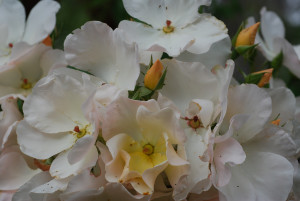Happy week after Thanksgiving, everyone! I hope you had a lovely holiday. I turned in a WIP last Friday (yay!), and am taking a breath before diving into the next story tomorrow (which is a Christmas book, the next in my Elizabethan Mystery series–I think this is the first Christmast story I have ever written near the actual holiday. Usually they seem to be due in July, and I have no snowy holiday feelings when it’s 94 degrees outside…). In the meantime, I am taking a look back at my reading this year…
As usual, I seem to have spent most of my time reading research books, but I also came across some wonderful fiction, and also some new non-fiction! What did you enjoy reading this year??
I always get so excited when there is a new Jude Morgan book on the shelf! (I know Risky Janet is also a fan…) This year it was The Secret Life of William Shakespeare, which did not disappoint. (There wasn’t actually much “secret” about it, but the alternating POV between Will and his wife was very well done, and the atmosphere of Elizabethan England was wonderful)
IMO, the world definitely needs more ballet novels, and last summer I devoured Maggie Shipstead’s Astonish Me (which was over way too soon…)
Also, the world needs more novels about bookshops. And secret manuscripts. And lost love. Like Charlie Lovett’s The Bookman’s Tale…
There were two non-fiction histories, both of which pointed out in stark terms that the real life of princesses is often far from storybook, but rather isolating, lonely, helpless, and sometimes even terrifying, even though these two sets of royal sisters were 100 years and several countries apart–A Royal Experiment by Janice Hadlow, about the family of George III (6 daughters, kept isolated at home, growing increasingly desperate and bitter) and The Romanov Sisters by Helen Rappaport (4 sisters, kept isolated at home, dying untimely and horrifyingly violent deaths)
I love a good historical mystery, and I also love the history of the Gilded Age in America, so of course I devoured Alyssa Maxwell’s Murder at the Breakers (and can’t wait for the rest of the series…)
Historical romances are always saved as treats for vacation and/or time between deadlines (when I dangle them as “finish the book” carrots in front of myself!), so this weekend I am looking forward to diving into Risky Megan’s Duke’s Guide to Correct Behavior! (I also read two great new romances a few weeks ago, Meredith Duran’s Fool Me Twice, and Mary Balogh’s Only Enchanting, both of which had wonderful, realistic, heartbreaking characters…)
I’ve also been zooming my way through the DVDs of season two of the “Miss Fisher Murder Mysteries” (one of the few instances where I much prefer the movies to the books!). The 1920s fashions, cars, cocktails, and Phryne Fisher’s shining bob and naughty jokes are so much fun!
And now i am off to start my reading list for 2015!!!










